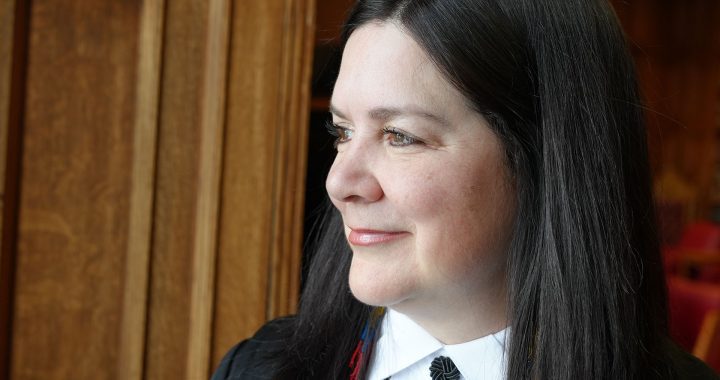Verna Polson steps out of the boat and onto the sand bar of Pointe aux Baptêmes. She walks a few feet before turning back towards the water, where the August morning light shimmers off the waves.
There she makes a tobacco offering to the Ottawa River. Except for her, this waterway that divides modern-day Quebec and Ontario is known by its original Algonquin name: Kichi-Sìbì.
The Great River.
“Kichi-Sìbì is a place where our ancestors used to travel. That was their highway,” explains Polson. “This is how they kept the land, protected from many different nations.”
Polson grew up near the Kichi-Sìbì in Temiskaming First Nation, about 300 kilometers north of here. On this day, she finds herself downstream to take in not only the beach of Pointe aux Baptêmes but also the industrial smokestacks of the Chalk River Laboratories. It sits less than a kilometre upstream from where Polson offered her tobacco- the site sticks out in contrast to the rolling hills and blue waters of the Kichi-Sìbì.
This place is known as the cradle of the Canadian nuclear industry.
“I think about the water, I think about the animals and think about future generations and what they’re going to be left with,” says Polson. “And that’s something I don’t want to leave my granddaughter and my great-grandchildren as something to deal with this nuclear waste.”
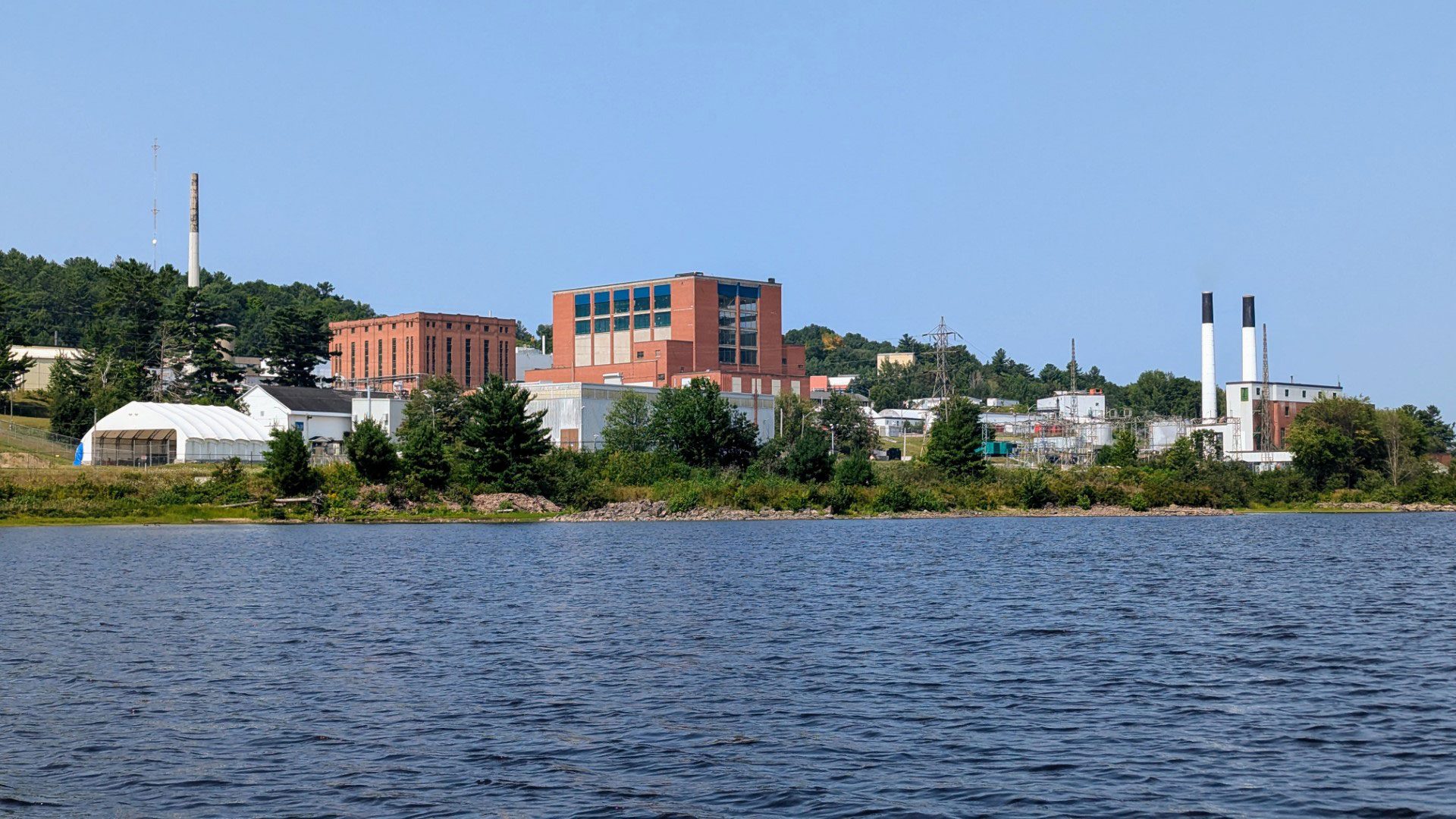
Established in 1944 about 200 kilometres northwest of Ottawa, Chalk River Laboratories is famous for research that led to the development of the CANDU (CANada Deuterium Uranium) reactor, one of the most efficient and safe nuclear reactors ever created, according to officials in the industry.
Researchers at Chalk River have gone on to win Nobel prizes, and for decades, it was a world leader in the creation of radioisotopes for fighting cancer.
However, Chalk River also has a darker legacy which includes supplying fuel for American nuclear warheads and in 1952, being home to the world’s first nuclear meltdown.
But much has changed since then. Chalk River Laboratories has been absorbed into Atomic Energy Canada, a Crown corporation that contracts out to a company called Canadian Nuclear Laboratories (CNL) to operate it.
CNL is currently in the midst of a government funded $1.2-billion facelift. But before it can be transformed into a state-of-the-art nuclear campus, nearly 80 years of radioactive legacy waste must be addressed.
In a statement, CNL says “While this waste was stored according to the best practices and regulations at the time, standards have changed.”
So the solution CNL is trying to get off the ground is called the Near Surface Disposal Facility (NSDF).
Others might call it a dump.
“This facility will not bring great things to the water or the land,” says Polson, “every one knows across Turtle Island, water is life.”
Polson is concerned by CNL’s plan to construct the nuclear waste facility a little over a kilometre from the Kichi-Sìbì, which provides the drinking water for millions of people.
The proposed site will hold about one million cubic tonnes of waste and will be about the size of 32 football fields.
CNL refused APTN Investigates’ request to tour the site and also declined to give an interview.
In the material that it has made public, CNL says that it will maintain a vigilant groundwater monitoring system and a leak from the waste is highly unlikely because the facility consists of 13 layers of natural and synthetic materials. CNL says that the site was chosen because it’s up on a ridge, so if a leak were to happen, it would slope away from the Kichi-Sìbì.
If there were to be a leak, it would take seven to 12 years before it reached the Kichi-Sìbì according to CNL.
The waste site is designed for low-level radioactive waste materials like protective clothing and soil that have become radioactive over the years.
Still, low-level radioactive waste is expected to have a half-life of 300 years.
According to CNL, the near-surface disposal facility is built to last at least 550 years.
Polson believes that it isn’t a matter of if the proposed disposal facility will fail… but when.
“How do they make sure this won’t happen? Can they guarantee that it’ll never happen?” wonders Polson “And the fish… the fish are sick already.”
The mention of sick fish is a reference to a disturbing discovery Mary-Lou Chevrier made this past April in the water of the Kichi-Sìbì.
“I was able to physically pin a sturgeon to the bottom here, and grab it by the gills, and extract it out of the water, and I was able to do that ten times over in the same night,” explains Chevrier.

Chevrier works for Kebaowek First Nation’s environment department.
In her spare time, the Algonquin woman says she likes to fish. She says she always wanted to catch a sturgeon but pulling it out of the water with her bare hands was not what she had in mind.
“It was concerning, I didn’t know what was wrong, it wasn’t something I had ever seen before in my life,” says Chevrier. “I have tried for a good 20 years to catch a sturgeon fish. I’ve tried all different baits. I grew up hearing stories of how well that they fight in the water.”
Chevrier used video and photos to document several sturgeons lethargically swimming near shore as part of her job gathering information on fish spawning. In the videos, they swim around in circles, and in some instances, ignore food.
Because they are bottom feeders, Chevrier says it’s also strange is that the sturgeons are swimming so close to shore.
“Some of them were actually ending up beached on shore that I had to assist back into the water,” adds Chevrier “So there was definitely something out of place.”
In her journal, Chevrier also noted a metallic smell in the air. Nearby, she found the carcasses of three other fish.
What Chevrier didn’t know at the time is that about a month and a half earlier, CNL, located about 25 kilometres upstream, had had a toxic wastewater leak and that it was still ongoing.
“I mean, mother nature can only heal herself so much, and then she needs help,” says Chevrier. “She needs people to step up and people to be on their A-game, you know, and report things and make the public aware of what’s going on.”
There’s no direct evidence that links the wastewater leak to the lethargic sturgeon. But according to reporting by CBC, non-radioactive toxic wastewater seeped into the Kichi-Sipi for two months before Environment Canada stepped in.
According to the report, CNL scrambled to fix an issue with the sewage treatment plant.
Even though the wastewater issue put them in violation of the Fisheries Act, CNL officials surmised that it wasn’t in large enough quantities to seriously harm the environment. The documents from the story show that Environment Canada disagreed with CNL’s assessment. Environment Canada’s enforcement branch put it in bold lettering in an email to CNL, stating that “…detriment to fish habitat or fish or to the use by humans of fish may reasonably be expected to result from the occurrence….”
In 2022, CNL had had a wastewater incident at the same location.
Emails from the director of communications at the Atomic Energy Canada, questioned whether the public would be interested.
“Who knows if it gains traction,” said an email from ??
It took CNL three weeks to make the incident public.
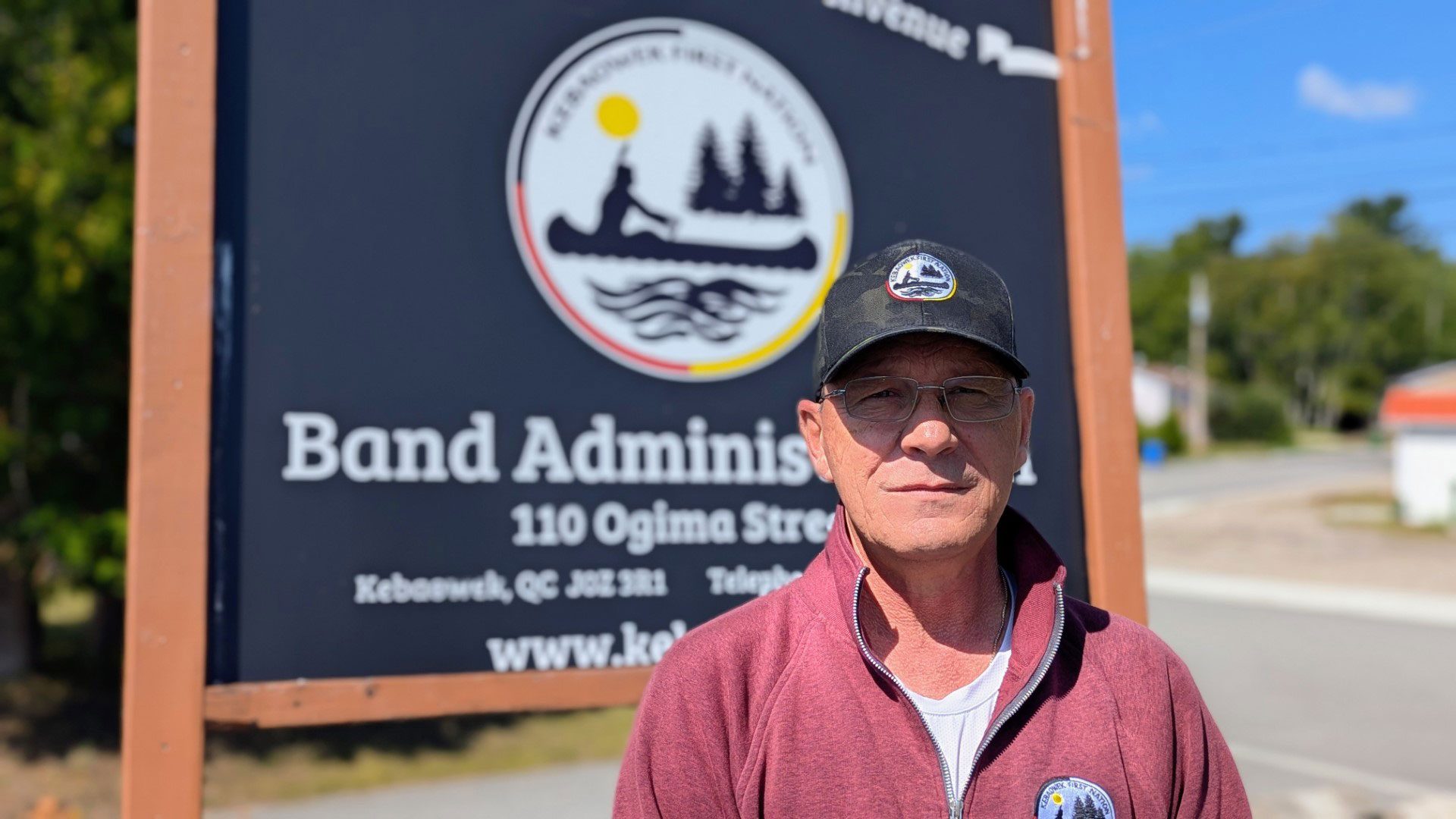
“They go out and tell the world that, look, trust us, we know what we’re doing,” says Chief Lance Haymond of Kebaowek First Nation. “But we’re not convinced that is, in fact, the case. And, yeah, we’re deeply concerned about, this [low level nuclear waste] project for the very reason there are so many variables.”
In a statement, CNL emphasized that they regularly communicate with stakeholders on environmental issues but “… we are learning from this event and making changes to better address the interests of our communities.”
As for the length of time it took to identify and fix the toxic wastewater problem, CNL says they had to check over 600 entry points over a dozen buildings and “…the time required to receive sample results did lead to periods where information was being requested of CNL when answers were not yet available.”
“CNL has demonstrated to us over and over the past number of years that they say a lot of things,” says Haymond, who’s become the political face of Kebaowek’s opposition to the waste facility project.
“We’re taking the position that if there’s a project and it causes harm to the nation as a whole, and then one of us are going to stand up and take responsibility and fight that fight on behalf of the [Algonquin] nation.”
Ten of the 11 Algonquin First Nations are against the waste facility site. But the reality is one million cubic metres of low-level nuclear waste is already being kept on the Chalk River site, and the interim holding fix is not a long term solution.
“Our independent experts tell us that that type of approach can continue until such time as we find a location where the waste can be stored and where everyone is agreeable,” says Haymond. “The problem is that from the outset, there was no other site chosen simply because CNL wanted to be able to do this on the cheap.”
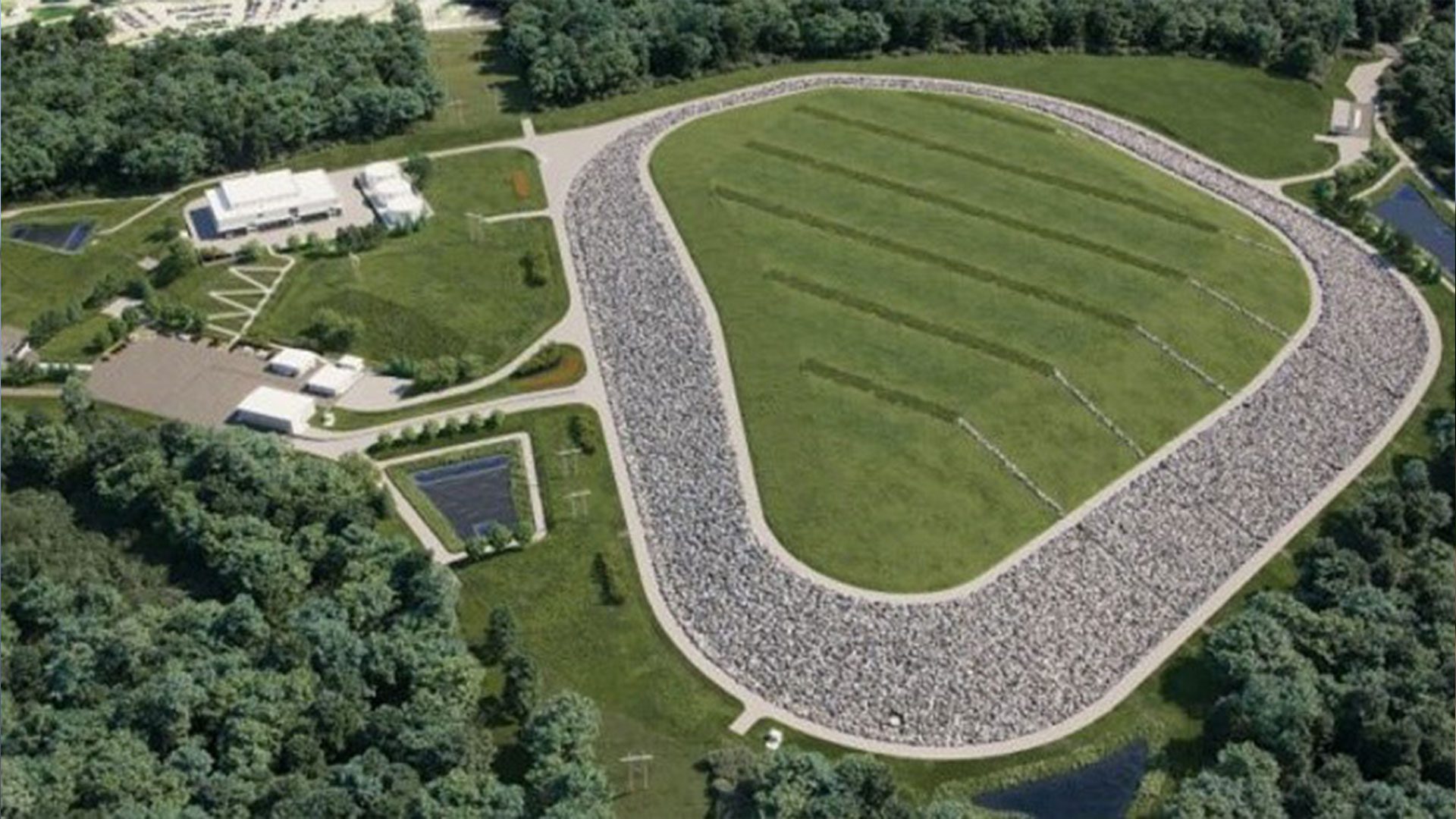
In response, CNL argues that “…the site is the most responsible location for the facility as this option minimizes additional handling of the material, helps ensure worker safety, and reduces the environmental impact of transporting the waste by truck.”
CNL adds that it would take about 50,000 shipments to move the waste out. When APTN asked CNL if they had ever done a cost/benefit analysis regarding transporting the waste versus constructing a waste disposal site, they declined to discuss how much it would cost to ship the waste elsewhere.
“It’s about profitability. It really is not about safety,” says Haymond “We feel that CNL will, and has to cut corners, to be able to build this project and be able to manage it in a way that is less impactful financially.”
A look into CNL documents suggests that the company is exploring how to make nuclear waste management profitable.
A CNL environmental remediation document obtained by APTN uses terms like “key strategic priority”, “business growth”, and “enhance CNL’s revenue streams” when referring to the nuclear waste management sector.
It also says they “… will take the opportunity to use its growing capabilities to pursue moderate growth in the decommissioning and waste management market…”.
CNL also intends to use five per cent of the near surface site for importing nuclear waste from hospitals and universities… the equivalent of about one and a half football fields.
When asked about importing and storing outside nuclear waste, CNL says that hospital and university waste will be managed at cost.
“Transportation of nuclear material causes us great concern, but at the same time, they’re already doing it,” says Haymond.
There are other ways to store nuclear waste, although they’re usually reserved for the high-level waste with a half life of tens of thousands of years.
Deep underground repository sites are already being proposed in Ontario, including in a couple of First Nations.
“We’re going to be working with our fellow First Nations and our allies,” says Haymond “Who now are going to be standing up and talking about the risks and the dangers of the transportation of nuclear materials across the country as they’re being brought to these various repositories for future storage.”
For now, the CNL near surface waste disposal facility is under judicial review, a court action undertaken by Kebaowek to legally question the Canadian Nuclear Safety Commission’s decision this past January to rubber stamp the site’s construction.
The crux of Kebaowek’s legal case is that Canada’s approval of the waste facility site failed to take into account the United Nations Declaration on the Rights of Indigenous Peoples (UNDRIP).
It’s a unique argument that will likely set a legal precedent… win or lose.
“Everybody seems to be passing the buck,” says Haymond “It’s really is on the federal crown to implement on UNDRIP. But when they delegate responsibility for consultation to an entity like Canadian Nuclear Safety Commission, it’s inherent upon the commission to take into consideration UNDRIP.”
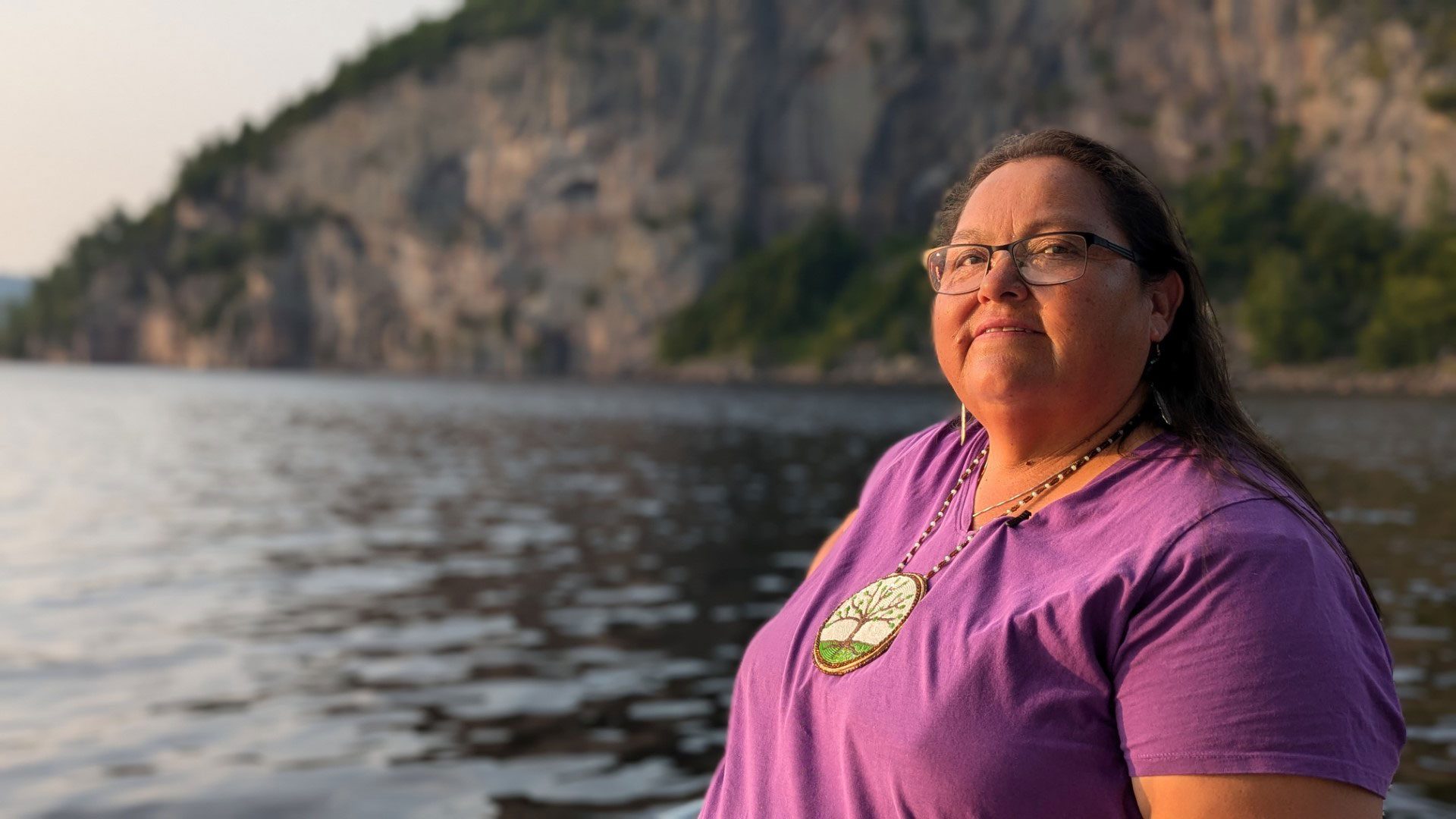
Just around the bend downstream from the Chalk River Laboratories site on the Kichi-Sibi sits Oiseau Rock, a bluff that serves as the highest point for kilometres around.
“It’s a significant place. There’s many different areas on this waterway that has sacred sites,” says Polson.
Oiseau Rock is named for peregrine falcons that nest on the top. Some First Nations see the peregrine falcon as the embodiment of the Thunderbird, a protector against evil spirits.
Read More:
Kebaowek Nation enlists help of Bloc Quibecois to stop Chalk River development
Polson watches the sunset tint the rocky façade orange from her boat, before pulling out her drum to play a travelling song for her ancestors.
“I think it’s important that we keep this place our legacy, a part of who we are as people of this land, these waters,” says Polson.
“We’re going to try our best to try to protect the sacred sites, because I think it’s important that we need to do this for our ancestors who were here before us.”
But as for the nuclear legacy on the Kichi-Sìbì, much of the Algonquin Nation may be in for a long haul.
One that will stretch the limits of their philosophy to guard the land not only for their ancestors…but for seven generations to come.











